1. Burmese Pythons
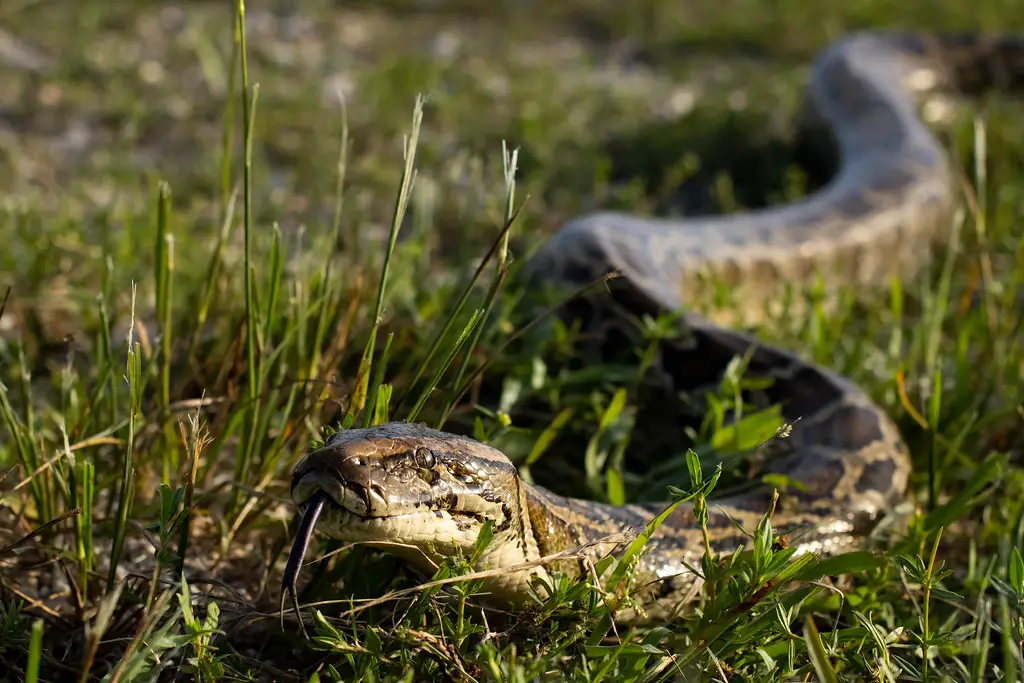
Hurricane Andrew is often blamed for the release of Burmese pythons into the Everglades. These massive constrictors, likely freed from exotic pet facilities, now dominate parts of the ecosystem, preying on native wildlife like deer and alligators. With no natural predators to keep their numbers in check, these snakes have bred prolifically, creating a significant ecological imbalance. According to History, they consume a wide range of species, including endangered ones, further exacerbating their environmental impact. Efforts to control their population, such as annual python hunts, have had limited success.
Researchers have found python stomachs containing everything from birds to bobcats, showcasing their indiscriminate diet. Their spread throughout South Florida has altered food chains and put pressure on conservation programs. Beyond their ecological impact, Burmese pythons also pose safety concerns for pets and even humans. Scientists continue to study their movements and behaviors to develop better management strategies. Despite these efforts, their presence in the Everglades remains one of the most striking examples of invasive species proliferation.
2. Iguanas
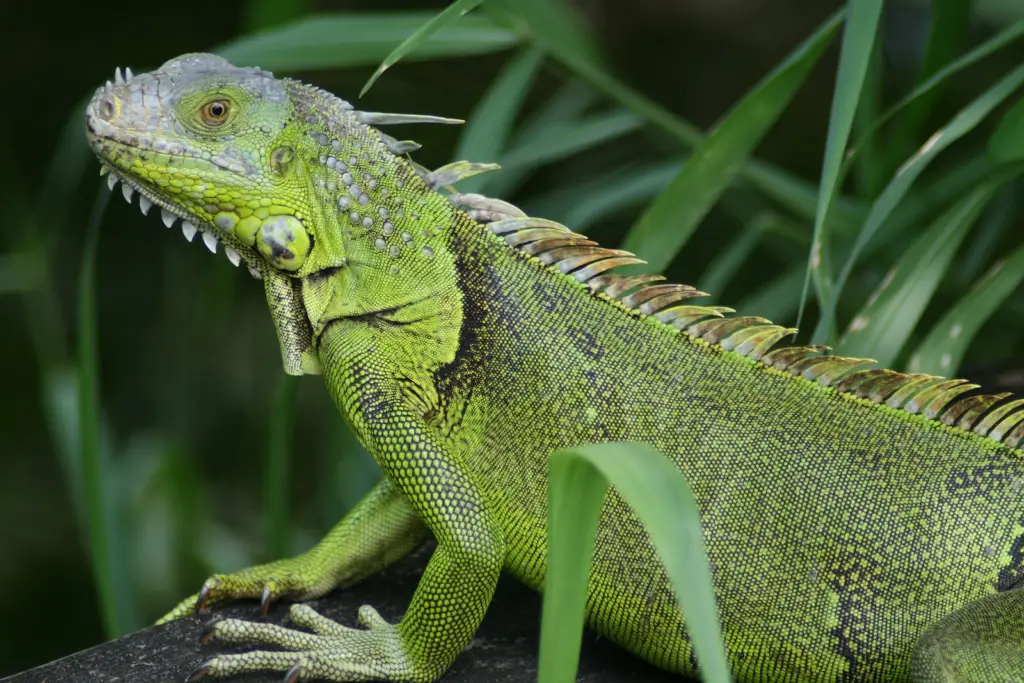
Green iguanas, already present in small numbers, spread rapidly after the storm disrupted exotic pet enclosures. These herbivorous reptiles are now a common sight across Florida, lounging in trees or sunbathing on seawalls. According to PetMD, known for its vivid green coloration and long tails, iguanas can grow up to six feet in length. Their rapid population growth has caused significant problems for homeowners and municipalities alike. Iguanas are notorious for digging burrows that undermine sidewalks, seawalls, and other infrastructure.
They also feast on flowers, fruits, and ornamental plants, much to the frustration of gardeners. During cold snaps, they become immobilized and sometimes fall from trees, earning them the nickname “falling iguanas.” Their droppings can also spread diseases like salmonella, creating additional public health concerns. Wildlife officials have encouraged humane removal methods, but controlling their population has proven challenging. The green iguana’s adaptability and reproductive capacity make them a persistent issue for Florida’s ecosystem and urban areas.
3. Nile Monitors
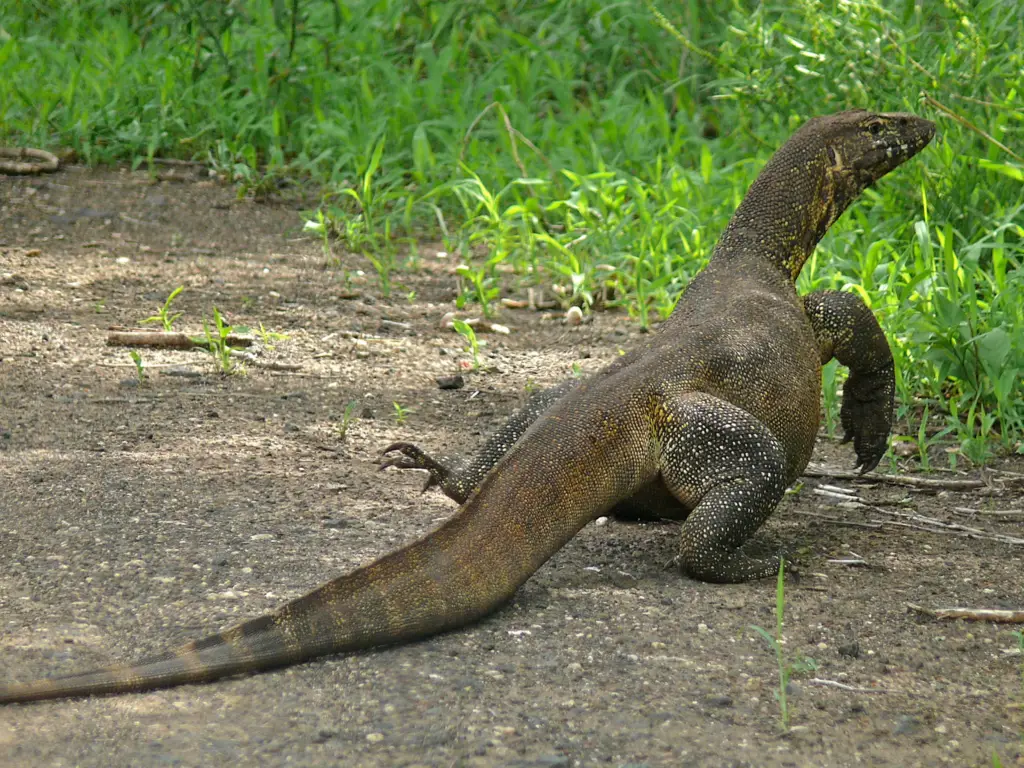
These large, carnivorous lizards are believed to have escaped during the hurricane, finding their way into Florida’s warm and hospitable environment. Nile monitors can grow up to five feet long and are incredibly agile, both on land and in water. They are formidable predators, capable of taking down a variety of prey, including small mammals, birds, and reptiles. According to the Florida Fish and Wildlife Conservation Commission, particularly concerning is their appetite for native turtle eggs, which has put additional strain on already vulnerable species. Their sharp teeth and claws make them a threat not only to wildlife but also to humans and pets if provoked.
Since their escape, they have established breeding populations in certain areas, particularly near canals and wetlands. Wildlife officials have launched removal efforts, but the species’ elusive nature makes them difficult to track. They often bask in the sun on riverbanks or climb trees to escape threats, showcasing their adaptability. Public awareness campaigns have been crucial in helping people identify and report sightings of Nile monitors. Despite these efforts, their population continues to grow, underscoring the challenges of invasive species management.
4. African Land Snails
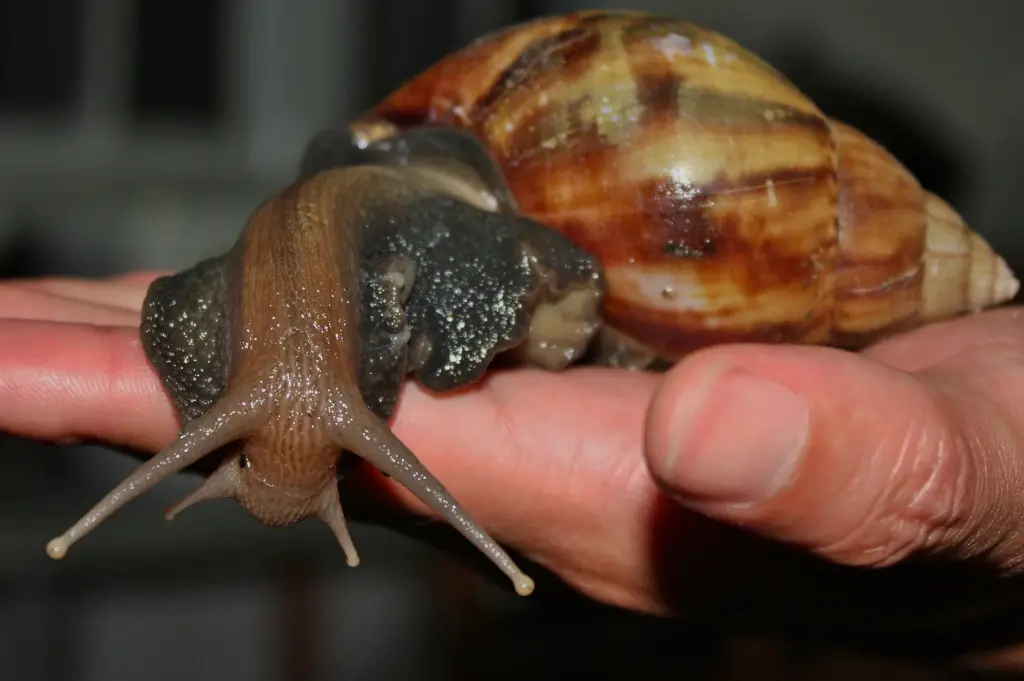
Though not directly tied to the storm, the hurricane’s aftermath created ideal conditions for these massive snails to thrive. According to the Florida Department of Agriculture & Consumer Services, African land snails can grow up to eight inches long and are among the most destructive invasive species in Florida. They consume over 500 types of plants, making them a significant threat to agriculture and natural ecosystems. These snails are also known to eat stucco and plaster, as they seek out calcium to build their shells. Beyond their appetite for destruction, they pose health risks by carrying a parasitic nematode that can cause meningitis in humans. Their rapid reproduction rate makes them particularly difficult to control, with a single snail capable of laying hundreds of eggs at a time.
Efforts to eradicate them have included the use of bait and chemical treatments, but their persistence remains a concern. The snails’ ability to survive in a variety of environments has allowed them to spread widely across the state. Public education campaigns have been key in encouraging residents to report sightings and avoid handling the snails. Despite ongoing eradication efforts, African land snails continue to challenge Florida’s agricultural and environmental stability.
5. Lionfish
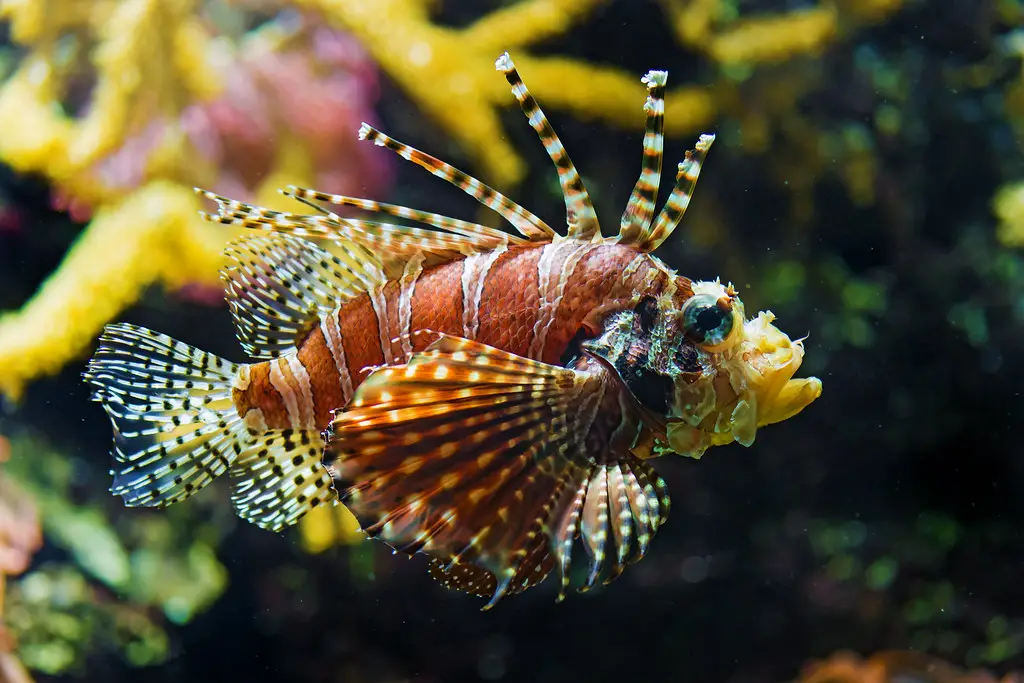
While lionfish were already present in Florida waters, Hurricane Andrew may have accelerated their spread by disrupting aquarium facilities. These venomous fish, native to the Indo-Pacific, are now a pervasive threat to Atlantic reef ecosystems. Lionfish have few natural predators in Florida’s waters, allowing their populations to explode. Their voracious appetite for small fish and invertebrates has decimated native reef species, disrupting the balance of marine ecosystems. Lionfish can consume prey up to half their body size, outcompeting native species for food and habitat.
According to the National Oceanic and Atmospheric Administration, their venomous spines deter most predators, making them nearly invincible in their new environment. Efforts to control lionfish populations have included spearfishing tournaments and the promotion of lionfish as a menu item in local restaurants. Divers and conservationists have also worked tirelessly to remove lionfish from reefs, but their numbers remain daunting. Researchers are exploring innovative solutions, such as robotic lionfish hunters, to combat their spread. The lionfish invasion highlights the broader risks associated with the release of non-native species into delicate ecosystems.
6. Parakeets and Other Exotic Birds
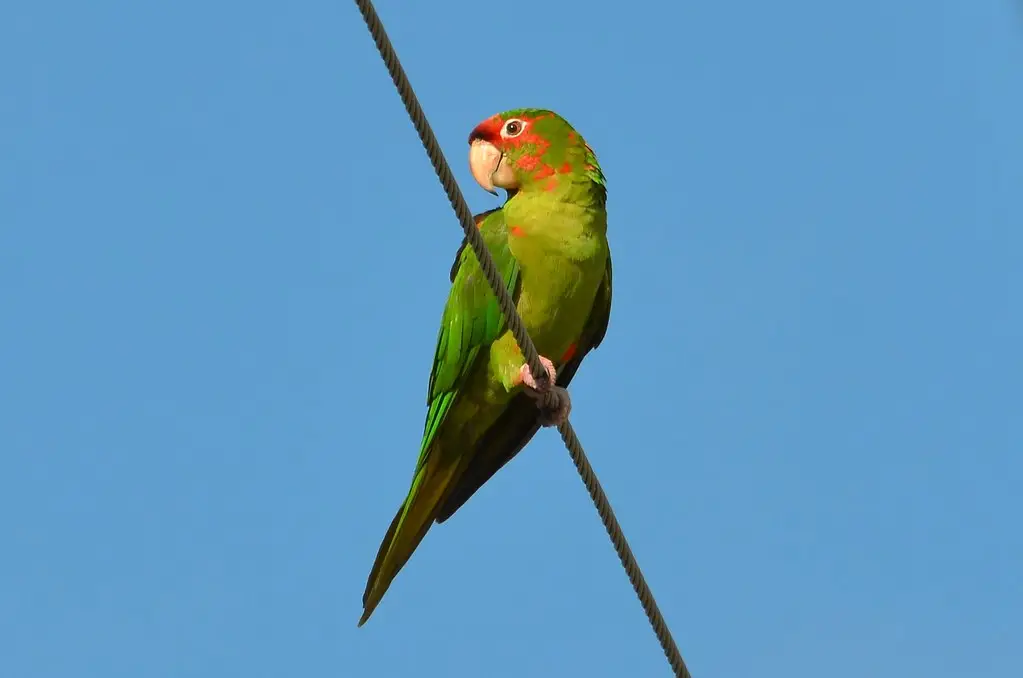
Numerous exotic bird species, including monk parakeets, escaped aviaries during the storm and found refuge in Florida’s warm climate. Monk parakeets, known for their bright green feathers and sociable nature, have since established thriving colonies in urban and suburban areas. These birds are highly adaptable and often build large, communal nests on utility poles, causing power outages and infrastructure damage. Their diet includes seeds, fruits, and grains, which has led to conflicts with farmers and gardeners. Parakeets are also known to displace native bird species by outcompeting them for food and nesting sites.
Despite their invasive status, many Floridians enjoy their presence and view them as a charming addition to the landscape. Wildlife officials have debated how to manage their populations, balancing ecological concerns with public sentiment. In addition to monk parakeets, other exotic bird species have established smaller populations, contributing to Florida’s diverse avian scene. Public awareness campaigns have helped inform residents about the impact of these birds on native ecosystems. However, the long-term implications of their presence remain a subject of ongoing study.
7. Cuban Tree Frogs
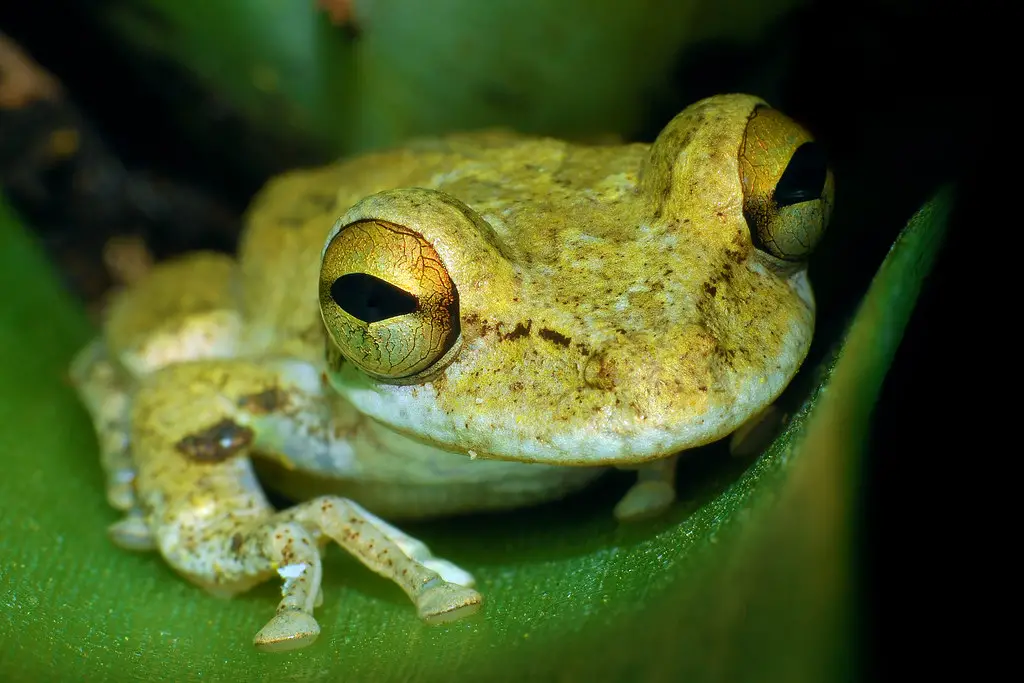
This invasive amphibian exploded in numbers after the hurricane, taking advantage of the disrupted environment to establish a strong foothold. Cuban tree frogs are large, warty amphibians that prey on a wide range of insects and smaller native frogs. Their voracious appetite and competitive nature have led to declines in native frog populations, altering the balance of local ecosystems. These frogs are also known to take shelter in electrical boxes and pipes, causing damage and creating maintenance headaches. Their sticky skin secretes an irritating substance that can be harmful to humans, pets, and other animals.
Cuban tree frogs thrive in both urban and natural environments, making them particularly difficult to manage. Efforts to control their population have included public education campaigns encouraging residents to humanely euthanize captured frogs. Researchers have also studied their behavior and reproductive habits to develop targeted management strategies. Despite these efforts, Cuban tree frogs remain a pervasive and problematic presence in Florida. Their ability to adapt to various environments underscores the challenges of controlling invasive species.
8. Marmosets
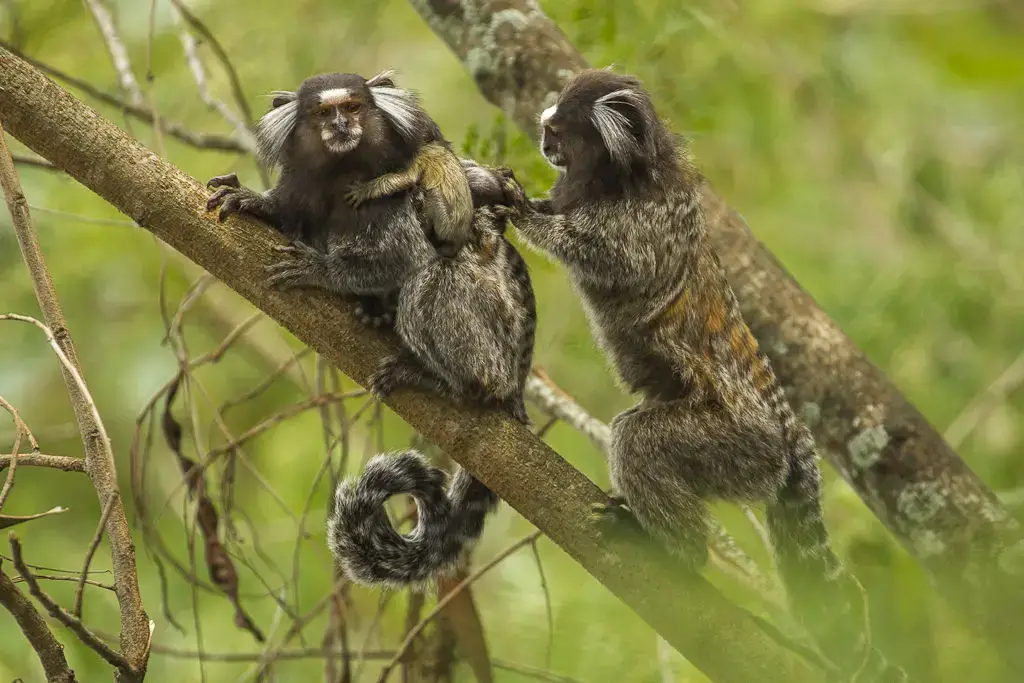
Small monkeys like marmosets reportedly escaped during the chaos of the hurricane and have since established small populations in localized areas. These primates are highly intelligent and social, often forming tight-knit groups. Marmosets primarily feed on fruits, insects, and tree sap, which puts them in competition with native species. Their presence has raised concerns about potential disease transmission to humans and other animals. While sightings of marmosets are relatively rare, they are known to thrive in specific habitats, such as wooded areas and suburban neighborhoods. Wildlife officials have worked to track their movements and assess their impact on local ecosystems.
Marmosets’ playful nature and curious behavior make them a favorite among some locals, but their invasive status cannot be ignored. Efforts to capture and relocate them have had limited success due to their agility and intelligence. Public education campaigns have focused on discouraging feeding or interacting with these animals. The long-term impact of marmosets on Florida’s environment remains uncertain, but their presence highlights the unintended consequences of human activity.
9. Tokay Geckos
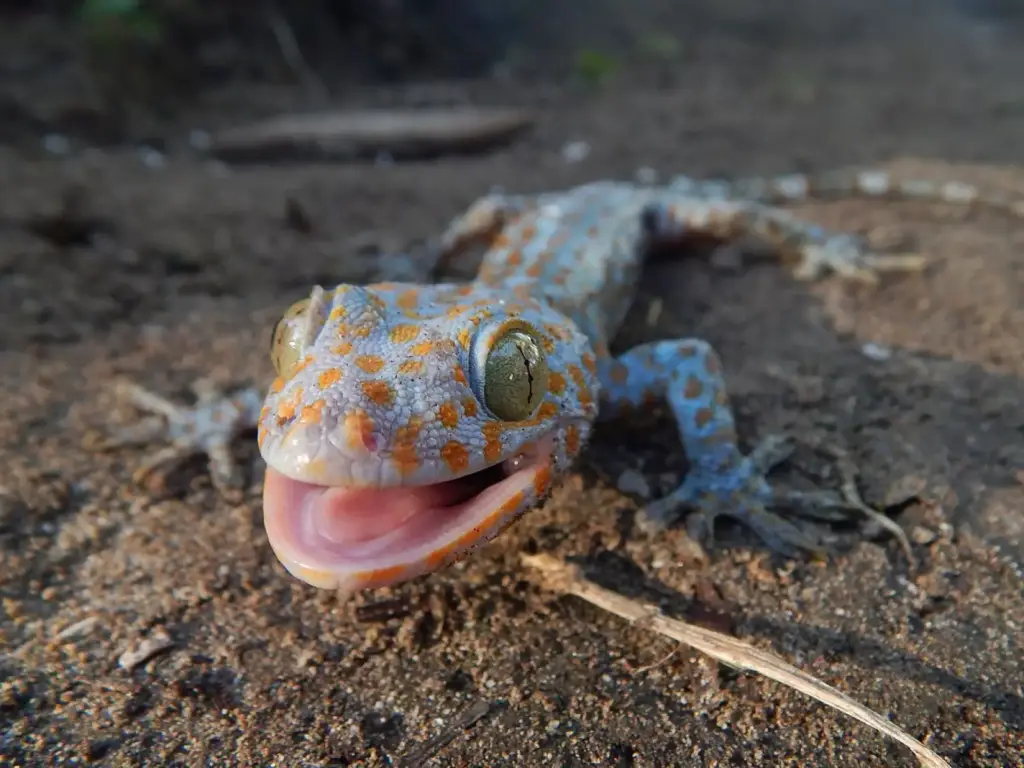
These strikingly patterned lizards were among the pets that went rogue during Hurricane Andrew, finding Florida’s climate to their liking. Tokay geckos are large, nocturnal lizards known for their loud, distinctive calls. They are aggressive hunters, preying on insects, small rodents, and even other lizards. Their territorial nature often puts them in conflict with native gecko species, which struggle to compete for food and habitat. Tokay geckos are also known for their strong bite, which can be painful to humans if provoked.
Since their escape, they have spread to various parts of the state, thriving in both urban and natural environments. Efforts to manage their population have included removal programs and public awareness campaigns. Despite their invasive status, some residents view them as beneficial for controlling pest populations. However, their impact on native species and ecosystems remains a concern for wildlife officials. The spread of Tokay geckos underscores the challenges of balancing human and ecological interests in managing invasive species.
10. Armadillos
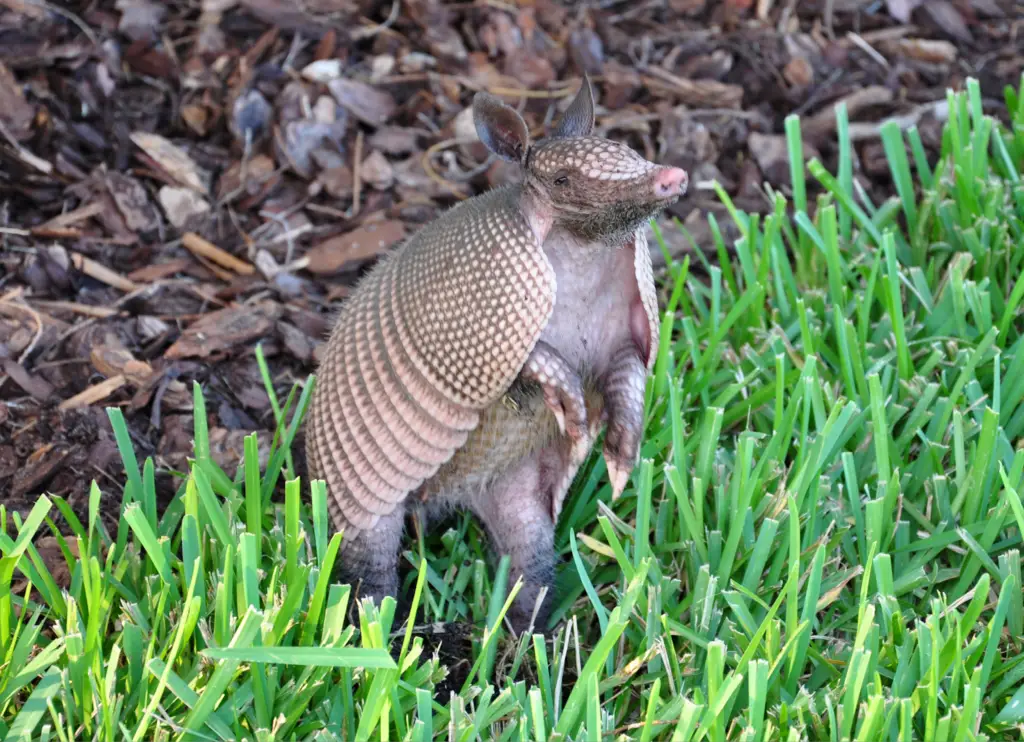
Although armadillos were already present in Florida, the storm’s environmental disruptions allowed their range to expand significantly. These nocturnal mammals are known for their digging habits, which can wreak havoc on lawns, gardens, and agricultural fields. Armadillos feed on insects and other invertebrates, often leaving behind telltale holes as they forage. While they play a role in controlling pest populations, their burrowing behavior can undermine structures and disrupt ecosystems. The storm’s aftermath provided new opportunities for armadillos to colonize previously uninhabited areas. Their hard shells provide some protection from predators, but they are vulnerable to traffic, making roadkill a common sight.
Wildlife officials have encouraged non-lethal control methods, such as exclusion and habitat modification, to manage their population. Despite their nuisance status, some residents appreciate armadillos for their unique appearance and ecological role. Ongoing research aims to better understand their behavior and develop more effective management strategies. The armadillo’s adaptability and persistence highlight the complexities of managing wildlife in a changing environment.
11. Feral Cats
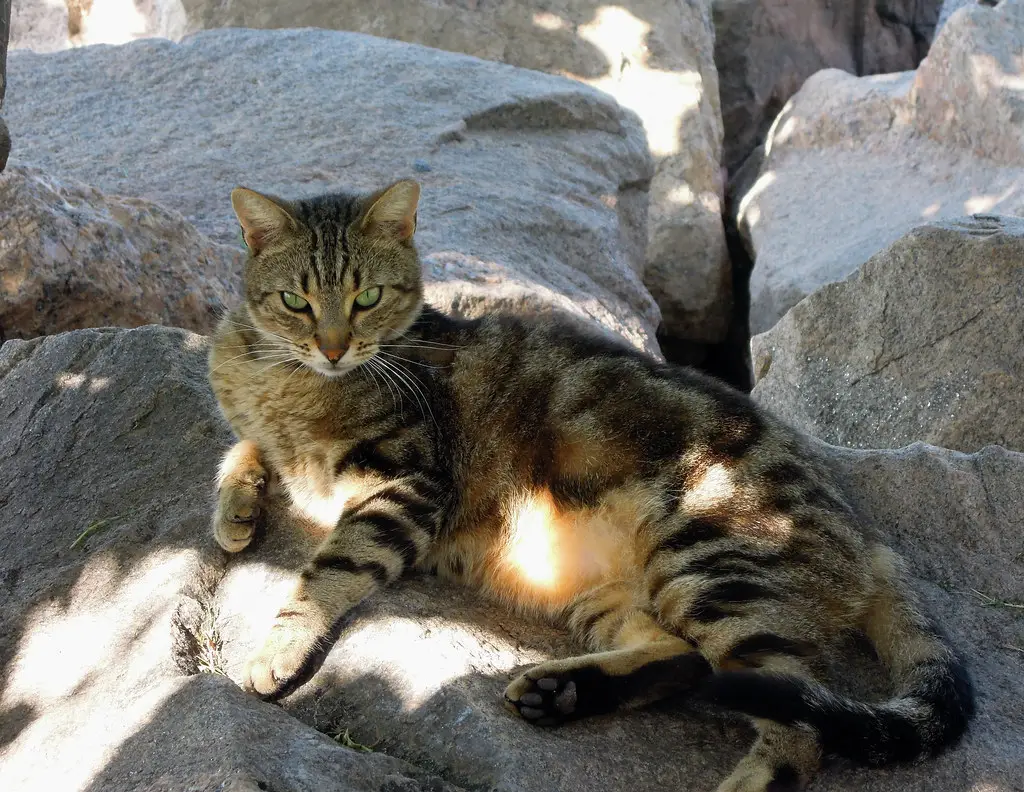
The hurricane displaced countless domestic animals, including cats, many of which became feral in the aftermath. These cats formed colonies that have since grown, impacting native bird and small mammal populations. Feral cats are skilled hunters, capable of decimating local wildlife in areas where they roam. Their presence has sparked debates about humane management methods, with some advocating for trap-neuter-return programs and others calling for stricter control measures. In addition to their impact on wildlife, feral cats can carry diseases that pose risks to other animals and humans.
The storm’s chaos created ideal conditions for these cats to establish themselves in both urban and rural environments. Efforts to manage feral cat populations have included public education campaigns and partnerships with animal welfare organizations. While some residents view feral cats as a nuisance, others have embraced them as part of Florida’s landscape. The challenge of balancing animal welfare with ecological preservation continues to fuel discussions among conservationists and policymakers. Feral cats remain a visible reminder of the long-term impacts of Hurricane Andrew.
12. Peacock Bass
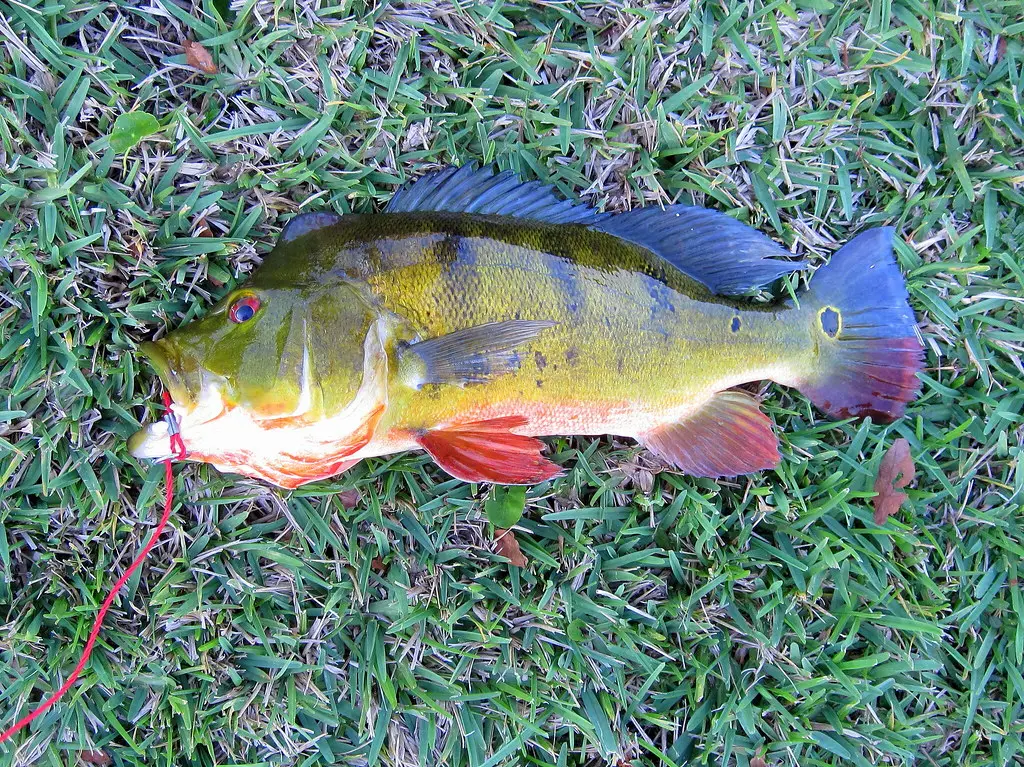
This non-native fish, initially introduced for sport fishing, spread more widely after the hurricane disrupted aquatic environments. Peacock bass are aggressive predators, known for their striking appearance and powerful strikes on prey. Their diet includes smaller fish and invertebrates, which puts them in direct competition with native species. The hurricane’s flooding allowed them to access new habitats, where they quickly established themselves. Peacock bass are popular among anglers for their fighting ability, but their impact on local ecosystems cannot be ignored.
They have altered food webs and reduced populations of native fish in many areas. Efforts to manage their spread have included monitoring programs and habitat restoration projects. Some conservationists have advocated for stricter regulations on their introduction and transport. Despite their invasive status, peacock bass have become a prized target for recreational fishing in Florida. The species’ presence highlights the unintended consequences of introducing non-native animals into complex ecosystems.


